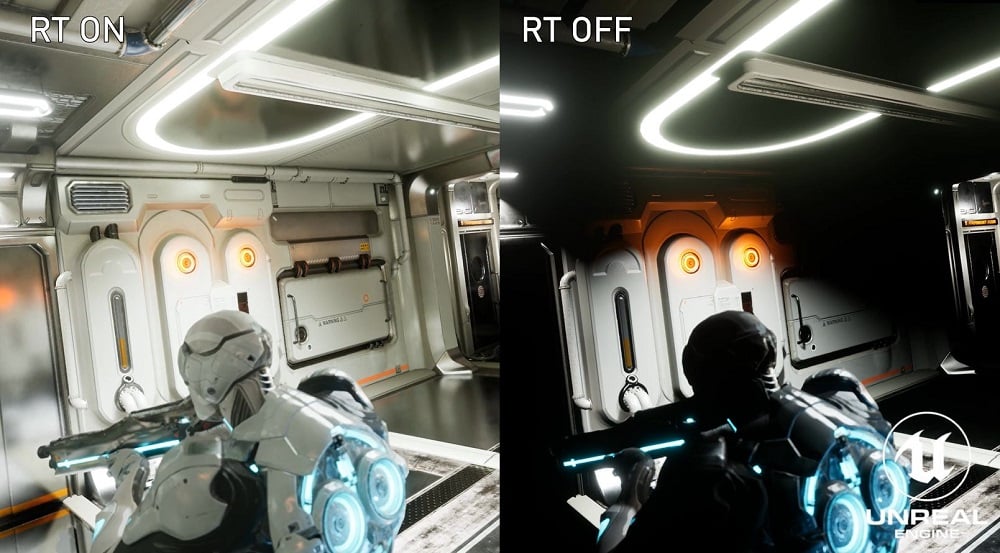As the popularity oAs smartphones gain popularity, so does the demand for high-quality mobile games. Consumers now crave the same brilliant graphics from their PC and console games on their mobile devices, raising expectations for smartphone gaming performance. Samsung, aware of these needs, recently launched the Galaxy S23 series, boasting impressive graphics performance. A standout feature of the phone is Ray Tracing, commonly found in high-end graphics cards. Samsung experts have recently shed light on the Ray Tracing capabilities of the Galaxy S23 series. Here are the details…
Realistic Graphics in Real-Time: Samsung Experts Explain Ray Tracing for the Galaxy S23 Series
The Samsung Galaxy S23 series, unveiled on February 1, boasts one of the best and most powerful GPUs, enhancing performance by 41% compared to the previous version and featuring Ray Tracing. This cutting-edge rendering method produces graphic effects in real time by tracing rays of light.
The Galaxy S23 series’ GPU has specialized hardware to accelerate ray tracing simulations, similar to a desktop GPU. This allows for more realistic shadows and light reflections in mobile games. Jungwoo Kim, who managed GPU development for the series, described Ray Tracing as “the ultimate graphic rendering method. Ray Tracing is a complex simulation that traces how the optic nerve of an eye receives a ray of light after being reflected, refracted, or diffracted by an object,” said Kim. “It’s very similar to how light is actually processed.”
Joonyong Park, who managed GPU technical support for the new product, explained that previous rasterization techniques were limited, resulting in awkward and inaccurate expressions. Ray Tracing, on the other hand, simulates the actual effect of how shadows are formed, creating accurate and realistic onscreen graphics.

Since 2010, Samsung has worked to break down barriers between console, desktop, and mobile graphics by expanding the performance and range of its graphics API. By partnering with major industry players, Samsung has standardized its latest technology as the common API, allowing more companies to apply the technology to games and expand their ecosystems.
“In 2016, we standardized the next-generation graphics API called Vulkan released by the Khronos Group and succeeded in commercialization through the Galaxy S7,” said Kim. “But, we’ve been working on advanced GPU development with partners like Epic Games and Unity to optimize the performance of Android games since 2015, before Vulkan was integrated into Galaxy devices.”
With the rising popularity of cross-platform games, Samsung quickly applied desktop GPU technology to their mobile GPU. Park said, “With the rise in consumers demanding that the graphic quality on their mobile devices matches the quality of consoles, we’ve been preparing to offer Ray Tracing technology in mobile game engines since two years ago.”

Samsung is at the forefront of incorporating advanced technologies into their products, and their collaboration with industry leaders like Epic Games and Unity has optimized the performance of Android games. This collaboration paves the way for introducing Ray Tracing technology in mobile game engines. Park emphasized his team’s dedication and proactive efforts in adapting desktop GPU technology for mobile use, ensuring users enjoy a seamless and immersive gaming experience.
The integration of Ray Tracing technology into the Galaxy S23 series is just the beginning. Samsung plans to expand this technology across various mobile devices to enhance the gaming experience. Kim stated, “Our next goal is to find the optimal method to apply Ray Tracing in many mobile devices and provide a great gaming experience to the users.”
As more game developers adopt the new mobile GPU technology, the number of mobile games supporting Ray Tracing is expected to increase. Park mentioned they were “working very hard to apply Ray Tracing technology to more mobile games.”
With continued development and implementation of Ray Tracing technology, mobile gaming is set to become even more immersive and visually stunning. Samsung is leading the charge in revolutionizing mobile gaming graphics, paving the way for a new era of realistic and captivating gaming experiences on mobile devices.
RELATED:
- Honor Magic5 Pro vs Samsung Galaxy S23 Ultra: Specs Comparison
- List of Samsung Galaxy Devices That Won’t Receive Android 14 (One UI 6.0) Update
- Oppo Find N2 Flip Review – Here Comes the New King of Flip Phones
- Upcoming Smartphones in March 2023: Redmi, Poco, Oppo, Huawei, and More
- Windows 11 on Surface Duo Project Receives Major Update Focused on…
(via)







